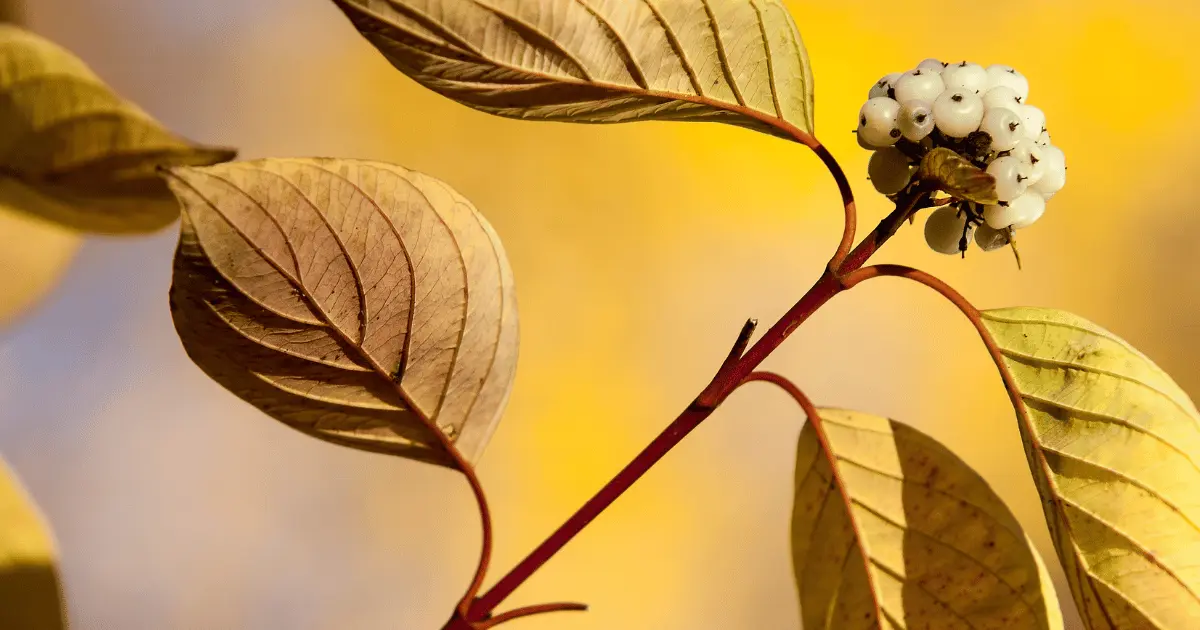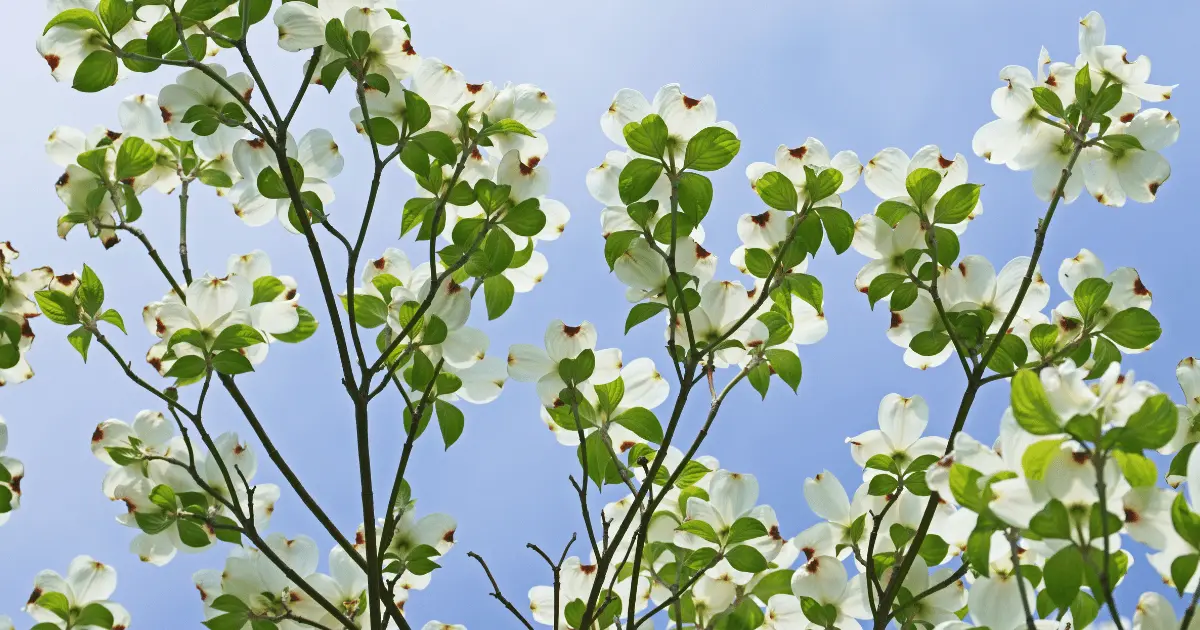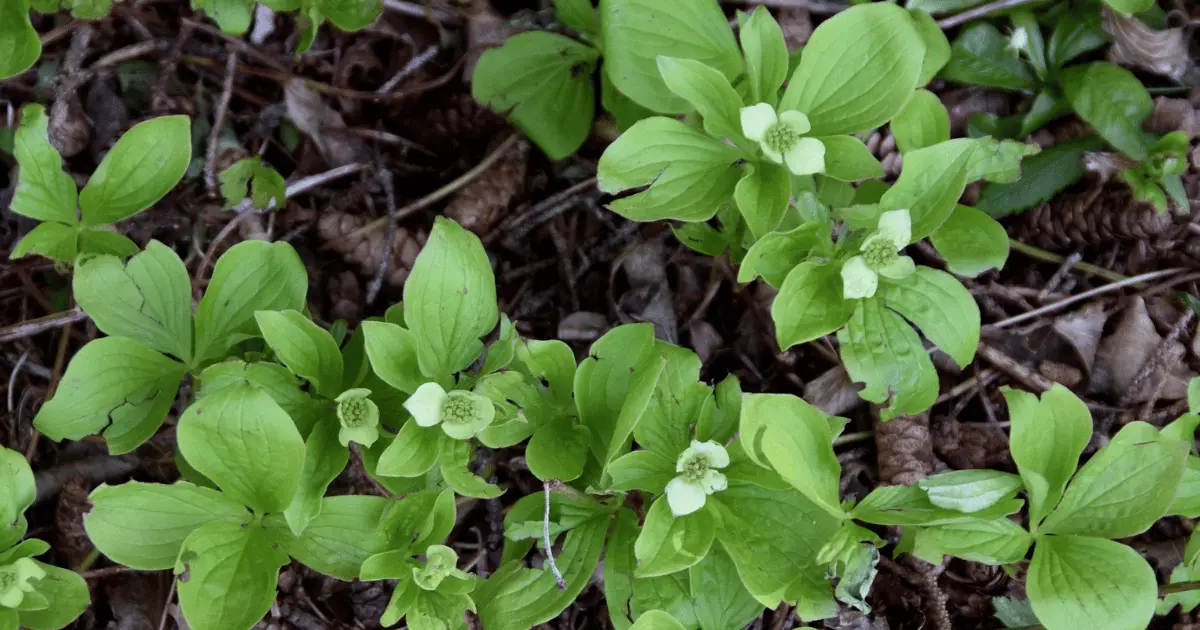A variegated dogwood tree, sometimes called Cornus florida, is a beautiful addition to any yard or garden, but it requires special care to grow and thrive. The tree has dark green leaves, red berries on the male plants, and creamy white flowers with pink or red centers on the female plants.
Variegated dogwood also has red stems, though the leaves are green with cream-colored stripes or margins. You can easily grow and care for both trees in your yard, particularly if you live in the USDA plant hardiness zones 3 through 8.
In this guide, you’ll learn how to properly plant, care for, and maintain your variegated dogwood tree so that it grows into an equally beautiful specimen!
What is a Variegated Dogwood?

Variegated dogwoods are deciduous trees with leaves in green, pink, or white colors. With a spread of 10-20 feet, they can reach heights of 15 meters. These plants prefer moist soil with acidic or alkaline pH levels. This plant blooms in late March through April with small clusters of creamy white flowers that hang on the tree after blooming is finished.
The dogwood tree also has white or cream-colored flowers, but its reddish-purple stems and red berries give the dogwood its more commonly known name of red osier dogwood. This versatile plant can adapt to just about any situation and does well in both full sun and partial shade locations, although it will perform best when grown in well-draining soil enriched with compost before planting.
Types of Variegated Dogwood
Dogwood is an attractive tree ideal as a small shade tree or accent plant in the landscape. What’s more, this stunning plant comes in different varieties and species that include the following:
White dogwood (Cornus alba)

This variety comes from many places, including Eastern Europe, North Korea, and Siberia. This huge shrub grows to 3-4 meters and expands broader when completely grown. The skin on its young shoots is crimson red and gradually darkens to a black-brown color. However, it appreciates wetness and may occasionally spread rapidly in a damp environment.
Flowering dogwood (Cornus florida)

Cornus florida is a wide-spreading, but slow-growing, dogwood variety endemic to North American woodlands. This American dogwood grows to be around four meters in height and six meters wide. Large, pointed leaves contrast with the green-purple stems. Flowering dogwood loves mildly acidic to humus-rich, neutral, well-drained soil and prefers sun to moderate shade.
Creeping dogwood (Cornus canadensis)

Creeping dogwood is a species that grows in Japan, Greenland, and North America. The root-stalking perennial grows to a height of 10 to 20 cm and grows well in damp, slightly acidic to neutral woodland soils in partial shade—the creeping dogwood blossoms in June, with white bracts around the flowers. Furthermore, the fruits are crimson red and resemble dwarf dogwood.
Red osier dogwood (Cornus sericea)

Red osier dogwood produces a brilliant yellow to light green sprouts that are especially beautiful in January after the leaves have fallen in October. This multi-shoot shrub, native to North America, prefers damp environments and tolerates practically any soil pH from alkaline to acidic. The Cornus cultivars’ cultivars’ Kelseyi” and ”Flaviramea” are the best recognized of this species.
When mature, red osier dogwood can reach 1.5 to 3 m in height and width. The deciduous leaves are oval to lancet in form and light green in color, and they sit parallel on the stem. Cornus serica is cold-resistant, spreads rapidly, and may even withstand flooding.
Cherry cornelian (Cornus mas)

This dogwood cultivar, also known as Cornelian cherry dogwood or European cornel, is a once-common wild fruit tree. It grows to a height of 6 – 8 m as a small tree or large shrub. The yellow blooms develop in spherical umbels around February and April on barren winter stems. The raw digestible, but sour flesh of some dogwood types creates a superb jam with an exceptional fruity flavor. This dogwood variety is well-known for its flavor, fruit size, and yield.
The Best Time to Plant Variegated Dogwood
Like most plants, early spring is the best time to plant variegated dogwood. If you wait until summer or fall, it will be harder for the tree to get established and survive. Also, ensure that you have plenty of space in your yard, so it has room to grow. Make sure there are no other trees nearby that may cast shade on your variegated dogwood.
When planting, dig a hole big enough to accommodate the roots and at least twice as wide. Cover the roots with soil and water them well before filling the hole again. You should water your new tree regularly, at least twice weekly during hot months or if rain needs to keep it sufficiently moist.
How to Propagate Variegated Boxwood
Variegated dogwood is propagated through stem cutting, and doing so involves the following steps:
- Choose a planting site in full sun that has good, well-drained soil.
- Ensure the hole you dig is twice the tree’s root ball’s diameter and deep enough to level with the surrounding plants.
- Fill the hole with water before adding soil to ensure it stays dry quickly.
- Carefully slide your plant into the hole and fill it halfway with soil mixed with compost or fertilizer.
- Spread more compost or fertilizer on top of the dirt and pack it down firmly, ensuring the soil surrounds the stem properly.
- Place mulch (leaves, bark pieces) on top of the ground surrounding your tree to keep weeds away and help retain moisture in the ground.
- Water your young dogwood tree thoroughly each time you apply fertilizer.
Keep an eye on the coloration of the leaves throughout the year – if they start to turn yellowish green, brownish yellow, or gray, there might be something wrong with your watering schedule!
Caring for Variegated Dogwood
Dogwoods are one of North America’s most popular flowering trees, with white blossoms in spring and red berries in fall. An all-year-round tree, variegated dogwood is certain to add color to your yard throughout the year. You can enjoy this stunning tree for years with good care and a little planning.
Variegated dogwood trees can be cared for by following these steps:
- Always pack the dirt around the tree’s base and press down firmly to secure the roots into place.
- Water generously after planting.
- Provide shade during hot summer months.
- Prune annually in late winter or early spring by removing any dead or diseased branches, thinning out overgrown parts of the tree, and shaping as desired.
- Remove any suckers or sprouts growing near the trunk – they can become a climbing point for insects or animals.
- Fertilize every two weeks from mid-April to mid-October with a low-nitrogen fertilizer such as manure tea, compost tea, or bone meal. Be sure to fertilize only a little, so you don’t harm the shallow root system of the variegated dogwood.
- Trim back shrubs at least three feet from the tree’s drip line (the outermost edge of its canopy).
- Keep grass and weeds trimmed to help keep the soil moist, aerate it and discourage pests like voles.
- To avoid having fruit drop prematurely, spread organic mulch around the tree’s trunk, ensuring not to cover up more than one-third of the bark.
When to Prune Your Variegated Dogwood
It’s important to be diligent when maintaining your variegated dogwood. Be sure to prune your dogwood in the late fall or early winter after they go dormant. A general guideline is that you should remove about one-third of the branches yearly, but the size of the tree and its overall health will determine how much you remove.
For example, if your variegated dogwood has a lot of dead wood and weak growth, it may need more trimming than others. If you notice pest damage during your inspection (particularly from borers), you’ll also need to make additional cuts.
Finally, note any broken or leaning branches so you can take them out before they snap under the weight of snowfall.
Pests and Diseases to Look Out For
Variegated dogwoods are susceptible to several common pests, including aphids, whiteflies, mites, caterpillars, Japanese beetles, and other leaf-eating insects. Aphids feed on the tree’s leaves, and Whiteflies suck sap from the tree’s leaves but generally don’t damage the plant. Mites can cause branch dieback if not treated quickly enough.
Regarding diseases, phytophthora and Clitocybe are common fungal infections affecting the root area of variegated dogwood. One effective way of treating this condition is spraying fungicides to protect the shoots and new leaves.
Variegated dogwoods are beautiful trees that grow well in many areas of the country and can be planted in spring or fall. If planted in the spring, they will need protection from frost until they grow tall enough to prevent damage. The plant will also need plenty of water during its first year as it grows quickly.
